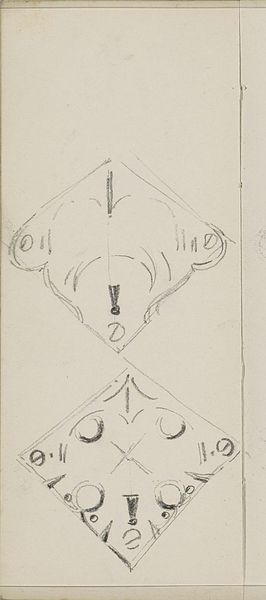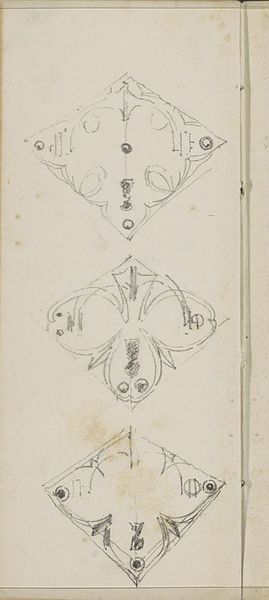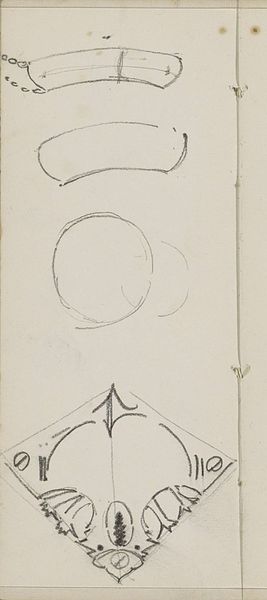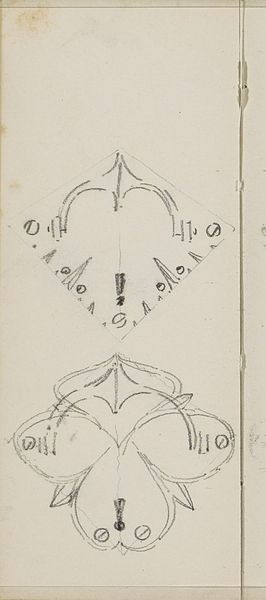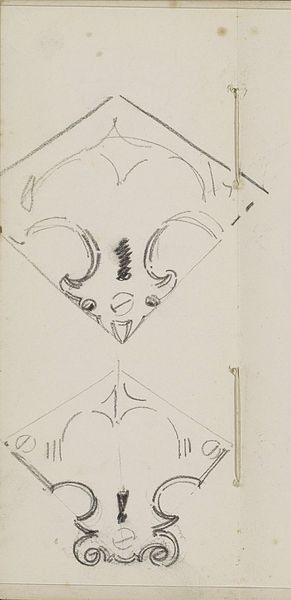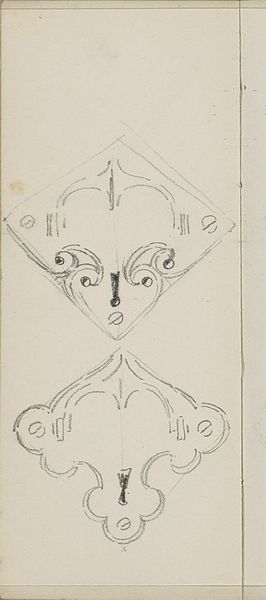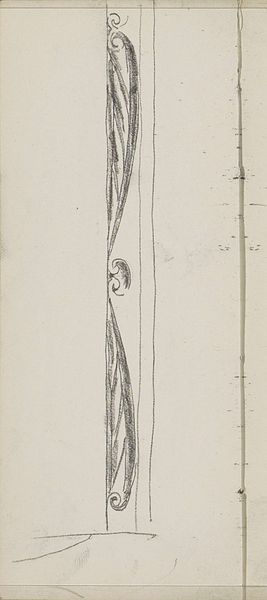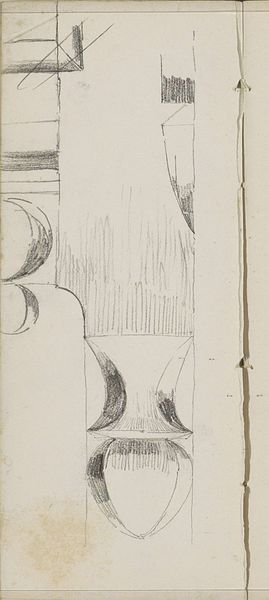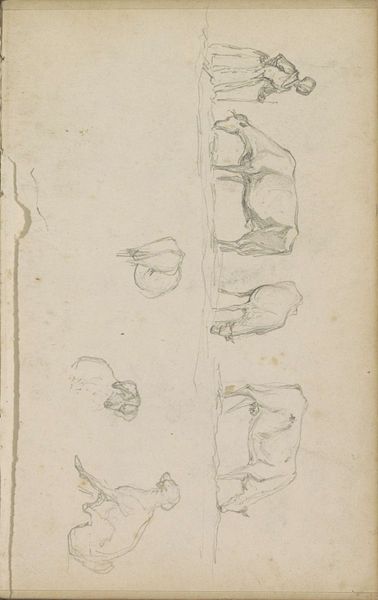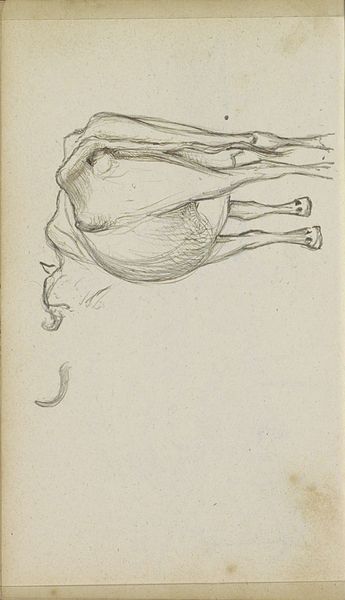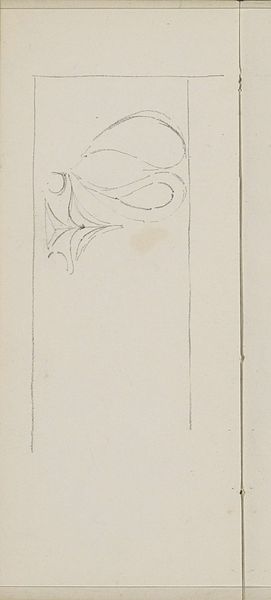
drawing, pencil
#
drawing
#
art-nouveau
#
pen sketch
#
hand drawn type
#
personal sketchbook
#
idea generation sketch
#
sketchwork
#
ink drawing experimentation
#
geometric
#
pen-ink sketch
#
pencil
#
sketchbook drawing
#
sketchbook art
#
initial sketch
Copyright: Rijks Museum: Open Domain
Curator: We’re looking at “Ruitvormige ornamenten,” or "Rhomboid Ornaments," a sketch by Gerrit Willem Dijsselhof, created between 1876 and 1924, now residing in the Rijksmuseum. It’s a pen and pencil drawing on paper. My immediate reaction is to the symmetry – almost meditative in its balance. Editor: Meditative? My eye is drawn to the diamond shapes, repeating, each with these...exclamation point figures within. There's a quirky dissonance despite the geometry. I also notice the looseness of line, the sketchiness which hints at the design process more than a finished artwork. Curator: Indeed, Dijsselhof was a key figure in the Dutch Art Nouveau movement. Ornament, pattern, and the symbolic properties of form were central. These rhomboids are like ideograms, stripped down emblems of an elusive concept. Think of it as a study, where the artist is playing with abstracting elements of nature or traditional motifs into a contemporary language. Editor: Precisely. And notice how within that geometry, he is playing with contrasting textures - solid shapes, little curves, small dots arranged to direct the eye. Almost a semiotic puzzle, the circles act like little indexes drawing our gaze around. Curator: What strikes me is the way Dijsselhof anticipates a design that lives beyond its pure visual form. It whispers of function, potential application within furniture or interior architecture. It almost begs to be repeated across textiles or integrated into graphic design. These seemingly simple shapes, imbued with Dijsselhof's sensibility, evoke tradition and speak to the possibilities of industrial design. Editor: A visual bridge, in a way, a design in potentia; that's very well put. It's remarkable to see how just a few pencil lines suggest an entire system. Looking closely allows us a glimpse into the artist’s design methodology, allowing us to witness the conceptual distillation that makes Dijsselhof’s Art Nouveau unique. Curator: Absolutely. It invites speculation, contemplation even—which is perhaps the truest value of a good ornament: its potential to engage the mind and invite dialogue across culture. Editor: A perfect synthesis of form and meaning then— the essence of design itself captured in the briefest sketch.
Comments
No comments
Be the first to comment and join the conversation on the ultimate creative platform.
